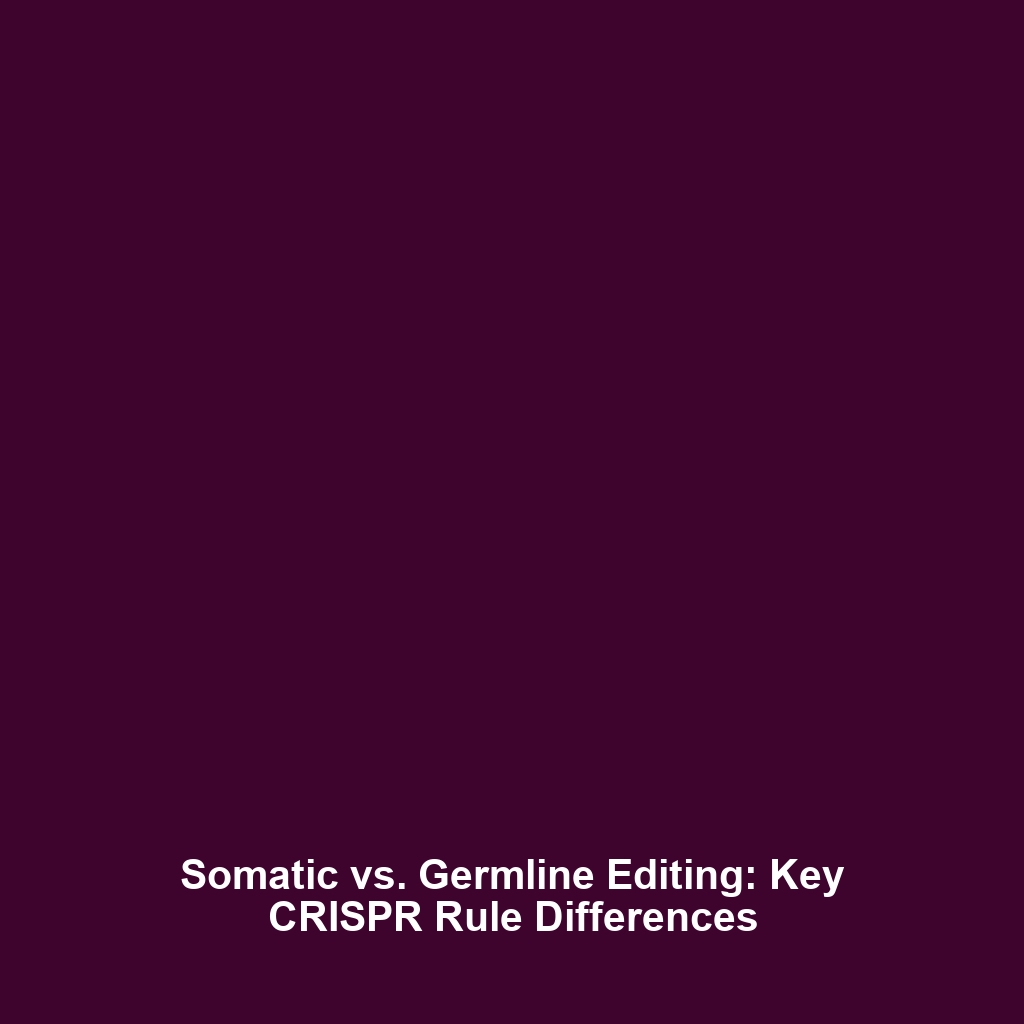How Base Editing Differs from CRISPR-Cas9 in Terms of Accuracy and Potential
Introduction
Base editing represents a groundbreaking advancement in the field of CRISPR gene editing, refining the way genetic modifications can be made. Unlike traditional CRISPR-Cas9 techniques, which can introduce unwanted mutations, base editing offers a more precise alternative. This significant difference in accuracy not only enhances the potential applications in medicine and agriculture but also paves the way for safer genetic changes. This article explores how base editing is different from CRISPR-Cas9, highlighting its importance within the broader context of CRISPR gene editing.
Key Concepts
To understand how base editing differs from CRISPR-Cas9 in terms of accuracy and potential, it’s essential to grasp a few key concepts:
- Base Editing: This technique enables direct, irreversible conversion of one DNA base into another, achieving changes without causing breaks in the DNA double helix.
- CRISPR-Cas9: In contrast, CRISPR-Cas9 works by creating double-strand breaks in DNA, which can lead to unwanted insertions or deletions during the repair process.
- Accuracy: Base editing’s accuracy is a significant improvement, reducing off-target effects that are more common with CRISPR-Cas9.
- Potential: This high precision opens new doors for the treatment of genetic disorders, making it a revolutionary tool in gene therapy.
Applications and Real-World Uses
Base editing is poised to transform various fields through its unique capabilities. Notable applications include:
- Medicine: Correcting point mutations responsible for genetic diseases such as sickle cell anemia and muscular dystrophy.
- Agriculture: Engineering crops with desirable traits, such as disease resistance and improved nutritional value, without introducing foreign DNA.
- Biomedical Research: Facilitating the creation of precise animal models for studying disease mechanisms.
These real-world applications illustrate how how base editing is used in CRISPR gene editing facilitates safer and more effective genetic modifications.
Current Challenges
Despite its potential, the field faces several challenges, such as:
- Delivery Mechanisms: Efficient and safe delivery of base editing tools into target cells remains a technical hurdle.
- Off-Target Effects: While reduced, there are still concerns regarding unintended genetic modifications.
- Regulatory and Ethical Issues: The implications of gene editing in humans raise important ethical considerations and regulatory challenges.
These challenges of base editing highlight the need for continued research and development within the CRISPR gene editing field.
Future Research and Innovations
The future of base editing looks promising, with ongoing research aimed at enhancing its capabilities and applications. Expected innovations include:
- Improved Delivery Methods: Developing new nanoparticles and viral vectors to improve the efficiency of base editing tools.
- Next-Generation Base Editors: Research into further refining base editors to increase their specificity and efficiency.
- Ethical Frameworks: Establishing guidelines and frameworks to address the ethical aspects of gene editing technologies.
These advancements could redefine the landscape of CRISPR gene editing in the coming years.
Conclusion
In summary, how base editing is different from CRISPR-Cas9 in terms of accuracy and potential positions it as a revolutionary tool in gene editing, with implications across medicine, agriculture, and scientific research. While challenges remain, the path forward is bright, promising more precise and safer methods of genetic manipulation. For further insights on gene editing technologies, explore our articles on CRISPR-Cas9 Applications and Ethics in Gene Editing.








